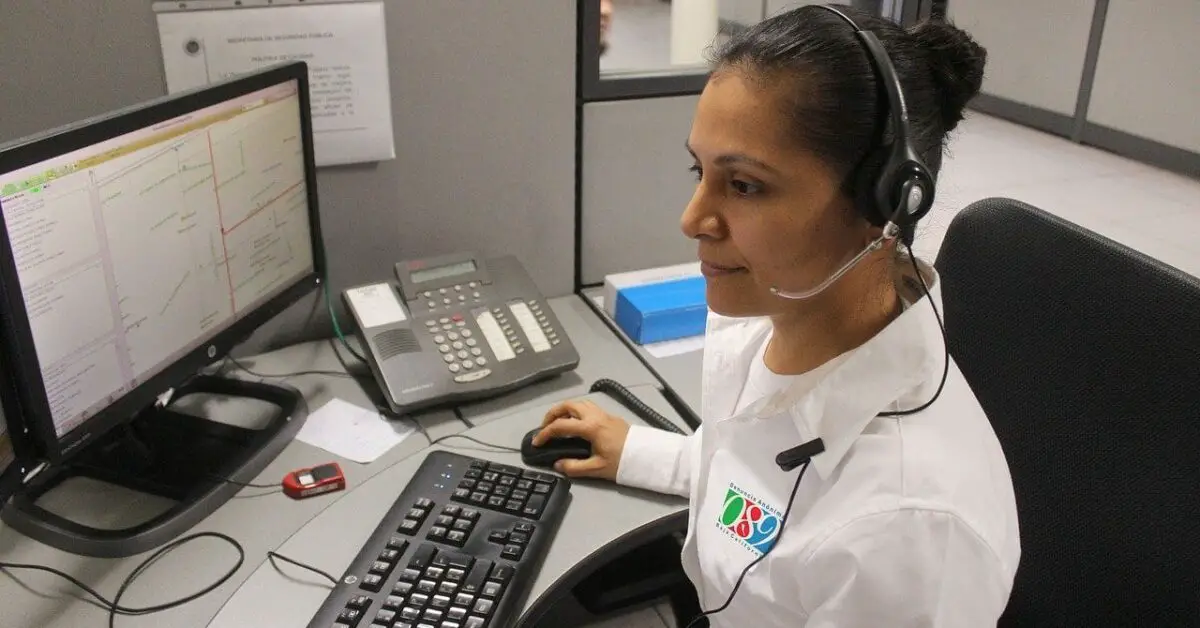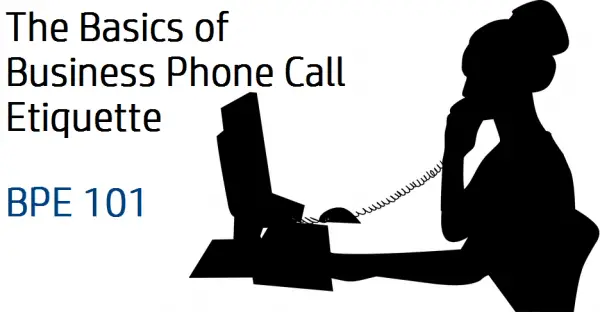Fixing an appointment may or may not be one of your job descriptions but the fact remains that every professional needs to learn how to carry out this task in the most effective manner and portray professionalism while doing so. In the modern business world, most appointments are fixed via email or phone calls.
In practice, fixing an appointment via phone call is a faster and more definitive mode of getting the job done than using the email. If taken with the seriousness it requires, no matter how often you do it, fixing an appointment via phone call can promote your brand – a cheap way of marketing your company.
The Task of Fixing an Appointment
Fixing an appointment via phone call is an easy task when dealing with an enthusiastic and interested person. However, in the case where the other party shows apathy or is neutral, your focus should be to sustain a healthy and interesting conversation on the other end of the line. This may help to create an avenue or atmosphere for fixing an appointment.
Your aim is to stir interest in a prospect and find out the reason a skeptic is not interested in fixing an appointment. Getting him or her to ask you one or more questions may just be the lead you need to explore and move forward in other to get an appointment booked. Therefore, you should not seek to clarify all doubts your prospect may have during a phone conversation in order to save time and to focus on getting the appointment.
Staying Focused and Fixing an Appointment
 Stick to the objective of your phone call, which is fixing an appointment. This is important. Stating the relevance of the appointment to your prospect should be one of your main focus. This will help you to achieve your objective. Some clients may make keeping focused unnecessarily difficult.
Stick to the objective of your phone call, which is fixing an appointment. This is important. Stating the relevance of the appointment to your prospect should be one of your main focus. This will help you to achieve your objective. Some clients may make keeping focused unnecessarily difficult.
Your prospect could raise objections regarding the core matter of your phone call. This is true especially if the result of you fixing an appointment with him or her is to sell a product or service. Do not be dissuaded. This is a legitimate reason for fixing an appointment. However, remember, your prospect will want to know what is in it for him or her.
If at any time the conversation begins to shift to other matters, endeavor to keep the conversation focussed on fixing the appointment and nothing else. Stay focused on your objective until you achieve.
Fixing an Appointment in Person
When fixing an appointment during a one-on-one interaction, you get to enjoy the full value of interpersonal means of communication. Employing the use of your nonverbal and verbal cues comes into play in this type of interaction rather than relying on your tone and pitch of voice when you relay your message via the phone.
This fact makes it paramount to understand and put into effective practice the art of fixing an appointment via phone call. This may give you a similar edge as though you were having a face-to-face interaction with the prospect.
The Art of Fixing an Appointment
 You may want to read our article on handling business phone calls professionally for a general knowledge of the subject. However, when fixing an appointment, there are additional guidelines to be observed to achieve your goal. An overview has been noted earlier. Let us discuss them in more detail with sample scripts.
You may want to read our article on handling business phone calls professionally for a general knowledge of the subject. However, when fixing an appointment, there are additional guidelines to be observed to achieve your goal. An overview has been noted earlier. Let us discuss them in more detail with sample scripts.
Salutation
Start the conversation with a salutation. This is a general business phone call etiquette. You may want to keep it as a “Hello” or “Good Morning”. Adding “Sir” or “Ma” may not be a good idea This is because you may not be sure of the gender of the person you are fixing an appointment with. You will probably only get to know this when you have introduced yourselves.
Introduction
The next thing to do is to introduce yourself politely. You mention your name and the name of your company. This is closely followed by confirming the identity of the person or firm you are communicating with. Ensure that you are fixing an appointment with the appropriate person or firm. This action helps to eliminate confusion.
So, a sample script that combines both salutation and introduction would be:
“Hello, my name is Gabriel, I am calling on behalf of Bent Enterprises… [Pause for a response] …Please, am I on to Meryl Smith?”
Notice the pause in between. It is important to pause to get a response after introducing yourself. This will allow the person on the other side to say something if they need to. Some people will introduce themselves, especially if you are speaking to someone from a company. Other people may not say anything. This is when it is important to verify who you would like to speak with.
Learn more about making business phone calls here.
More on Introduction
It is possible you are not speaking with the person you intend fixing an appointment with. Simply ask if you may speak with the person. If your aim is to place a call to a specific company, and not any person in particular, stating your intention is enough. That is, simply asking if you are on to the company, instead of mentioning anybody’s name.
Sample Script:
“Hello, my name is Gabriel, I am calling on behalf of Bent Enterprises… [Pause for a response] …Please, am I on to Johnson and Johnson Incorporated?”
Introducing yourself at the beginning of a phone conversation is a sign of courtesy. It is inappropriate to seek to verify the identity of the person at the other end before you make yours known. It is also not enough to mention just your name. Your introduction should include that of the organization you represent as shown in the sample scripts.
Elevator Pitch
After the salutation and introductions, you are expected to deliver your elevator pitch in the most succinct manner. The briefer you are in doing this, the more you are able to hold the attention of the person at the end of the line in the subsequent conversation. This aspect of your communication is what determines how long your call will last. It needs to be handled with the greatest care and skill.
Sample Script:
“We help companies and homes solve the problems of their air conditioning, by providing the sales and services of excellent appliances which meet their needs and budgets’’
The key words here may be excellence and budget. Many companies offer the same services and you may have just struck the right cord if you have prior knowledge of the need of the person or organization you are fixing an appointment with via phone call.
Drive the Purpose
Your respondent will want to know the purpose of your call if he or she is not aware. You may then go ahead with the purpose.
Sample Script:
“We will like to know how often you change or repair your air conditioning?’’
The subsequent response is inconsequential to how the line of your conversation would be tailored. Except the respondent asks that you send an email or to call back, proceed with the aim to show that your enterprise genuinely cares about ensuring that the person or his/her company has an effective and functioning air conditioning. This way, you are building a platform to establish a long-lasting relationship with them.
Finally Fixing an Appointment
Sample Script:
“This may interest you Mr Gibson; we have developed some innovative means to keep appliances at their optimal performance for a long period of time, and that right within the budget of our clients. If it is alright, you may fix an appointment to come over to see how we may be of service to you.”
So, you have done your salutation and introduction, you have also delivered your elevator pitch and purpose for calling. The next thing is to tie them all up to get you initial goal…fixing an appointment. Without getting this done, you have not truly achieved your goal.
When it is not Certain
You may face challenges while trying to get that appointment fixed. For instance, the person you are trying to fix an appointment with may plainly say he or she is not interested. Or the person may be showing disinterest without spelling it out. Do not be in a haste to pull out completely. You may encourage the person to take some time to consider it with a promise to call back.
If the other party is unnecessarily difficult, consider a tactical withdrawal from the conversation. You do not have to pester a prospect. This may irritate the person. Be compelling, but gentle. However, pull out of the phone conversation if it is getting heated up. Consider the fact that the other person may not be in the best of mood.
Sample Script (Uncertainty):
“Sir kindly take some time to consider the numerous benefits of our offer. I will call you next week to get a response. I hope you are fine with this”?
Sample Script (Pulling Out):
“Mr. Gibson, I can see that this is not a good time to call, my apologies. Thank you for your time.”
Final Tips
In the line of conversation, avoid informalities. Be formal, courteous and do not digress.
Stay focused on the subject of your conversation. Do not squander the time of the person on the other end with irrelevant topics. Avoid sarcasm and excessive persuasion. Be miserly with humor, if you must. Avoid saying too much. You may be burdening your respondent with too much information.
Edited by Kelechi Duru







